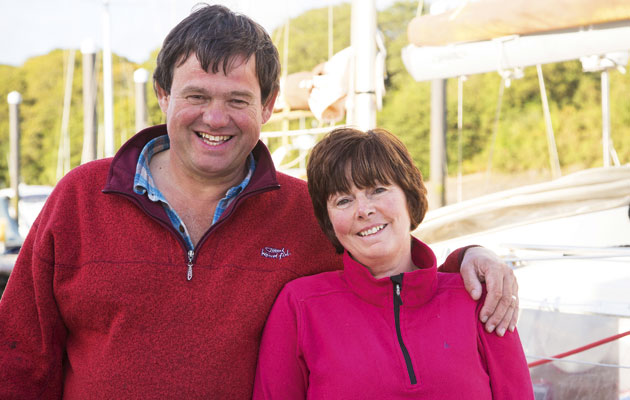We need to keep our hull clean, be don't want to be poisoning the water around our boats with antifouling, says Jonty Pearce
I’m very glad to read that DIY copper antifouling is not to be banned by the thought police. Don’t get me wrong – I’m all for ecological welfare – but at the end of the day boats and their hulls do need some form of treatment to avoid foul bottoms. The barnacles, weed, and sea growth that can overwhelm a yacht when antifoul is missing, malfunctioning, or worn out has to be seen to be believed. On Aurial I know that a dry out and propellor scrape is needed when the speed slows and the engine temperature and vibration increases. The encrustation of barnacles on the propellor blades can soon be removed, though I have not found a good regular application that keeps my bronze prop clean. I am tempted by folding propellers, but have yet to get satisfactory answers to their performance when faced with a barnacle attack.
For the hull, some method of deterring marine growth is essential. In the Napoleonic era sheets of copper used to be nailed to underwater planking which not only prevented growth and enhanced speed but also protected the hull from wood boring creatures. Boats so blessed lived longer and were worth more – hence the term ‘copper bottomed investment’. The yacht in the berth adjacent to Aurial is equipped with an ultrasonic system to deter marine life. I suspect that weed growth would need to be brushed off, but peering below the waterline reveals no obvious barnacles. Aurial herself benefits from a thick coat of Coppercoat on top of four layers of epoxy. I applied this before launching her eight years ago with the help of my wife and then 84 year old mother – the four coats of Coppercoat have to be applied in one day. This has turned out to be one of the best investments I made; the initial cost of less than £700 has saved itself more than ten times over when the price of annual antifouling, lift-outs, and dry storage are taken into consideration. The projected duration of this treatment seems to rise with each passing year, and the lack of ongoing hassle is a boon.
Thus to hear that DIY copper-based antifouling is to continue to be allowed is a great relief to me. However, ongoing debate surrounds the safety, disposal, and marine risks of traditional types of antifoul paint. Being realistic, I’m sure that some yacht owners might cut corners when faced with both disposal of old antifouling scrapings and in the use of proper protective clothing, but is this reason enough to either ban DIY application or outlaw the products completely? The ecological argument is yes, and this creates huge issues for the boat owning community. I can hear boatyard owners rubbing their hands with glee at the prospect of increased work flowing their way if professional application was deemed the only acceptable route. Many yacht owners could not afford this, so their boats would either become under-protected or a black market system would develop. If the products themselves were banned outright, the rush for copper based or other antifoul technology would spiral. I have read of silicon or ‘Teflon coating’ that marine creatures cannot hold onto, but regular boat use to create water flow past the hull is necessary to keep the hull clean, and many boats remain woefully underused. Ultrasonic technology may work for living creatures but may underperform in the weed department. Ultrasonics require electricity; my neighbour has fitted a wind generator which whirs away happily fulfilling this need, though many boats in marinas might rely on shore power.
Come what may, the living creatures surrounding our shores must be protected. Chemicals that damage, poison, and alter them have no place on the bottoms of our hulls or in the drains of our boatyards. Whatever permitted marine growth prevention systems must be safe, economical, and easy to use otherwise short cuts which undermine their ecological benefits will surely creep in. Copper has proved to be the best option for Aurial, but each boat owner will have to review and potentially change their winter hull maintenance. I will watch out for developments, but meantime intermittently scrubbing my Coppercoated hull with a deck brush while dried out on a sandbank will suffice for me!
Jonty Pearce: Fun in Holland
There's nothing like sailing in strange terrain to bring out the weaknesses inherent in most part-time sailors. Jonty Pearce sets…
Jonty Pearce: A Dutch treat
Jonty heads for a holiday in Holland finds an attractive and sheltered cruising grounds, where, unlike the more familiar Hebrides,…
Jonty Pearce: Life in the fast lane
When Jonty Pearce switches sails for 115 horse power and an inflatable boat, he discovers that long passages, and the…
Jonty Pearce: Racing about
The Olympics are upon us – and eager competitors are chasing each other about on the water after years of…
Jonty Pearce: Playing with steam
In the manner of the Fast Show catchphrase; ‘This week I have mainly been playing with steam’. No sailing, I’m…







